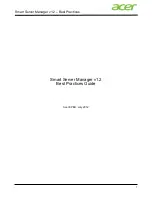
Using i!-Schedule
7
i!-Schedule
Case 2: dvVCRDev = dvVCR2
Case 3: dvVCRDev = dvVCR3
Case 4: dvVCRDev = dvVCR4
Case 5: dvVCRDev = dvVCR5
}
Send_Command dvVCRDev,"'CH',ITOA(nChannelNumberParam)"
Send_Command dvVCRDev,"'SP',8" (* Record *)
}
RELEASE:
{
Switch (nVCRNumberParam)
{
Case 1: dvVCRDev = dvVCR1
Case 2: dvVCRDev = dvVCR2
Case 3: dvVCRDev = dvVCR3
Case 4: dvVCRDev = dvVCR4
Case 5: dvVCRDev = dvVCR5
}
Send_Command dvVCRDev,"'SP',2" (* Stop *)
}
}
Schedule Persistence
i!-Schedule stores the schedule information in a file called
Schedule.bin
located in the
doc:\user\schedule
directory. All event information is stored in this file and recalled during power
up. Any event scheduled by the user is stored during a power cycle and will not be lost. This file is
only read during start-up.
The scheduling engine always attempts to read the file on start up. If you are loading a new program
containing scheduling into an old master that used to have scheduling, you should use FTP to
browse the NetLinx Master's file system and delete the old schedule file. Otherwise, the old
scheduling information is loaded in addition to any new scheduling information you have.
i!-ScheduleModTest2.axs provides a template for building you own application with
dynamic events.
Содержание I!-SCHEDULE
Страница 1: ...instruction manual integration Solutions i Schedule...
Страница 4: ...ii i Schedule Table of Contents...
Страница 14: ...Using i Schedule 10 i Schedule...












































